This site uses cookies as defined in our Cookie Policy, by continuing to use this site you agree to their use.
Continue
| Arrive | Depart | ||||||
| 14th14 | FebFeb | 202626 | Fort-de-France, Martinique, embark on the MSC Virtuosa | 23:00 | |||
The largest of the Windward Islands, Martinique is 4,261 mi (6,817 km) from Paris, but its spirit and language are decidedly French, with more than a soupçon of West Indian spice. Tangible, edible evidence of the fact is the island's cuisine, a superb blend of French and creole. Martinique is lushly landscaped with tropical flowers. Trees bend under the weight of fruits such as mangoes, papayas, lemons, limes, and bright-red West Indian cherries. Acres of banana plantations, pineapple fields, and waving sugarcane stretch to the horizon. The towering mountains and verdant rain forest in the north lure hikers, while underwater sights and sunken treasures attract snorkelers and scuba divers. Martinique is also wonderful if your idea of exercise is turning over every 10 minutes to get an even tan and your taste in adventure runs to duty-free shopping. A popular cruise-ship excursion goes to St-Pierre, which was buried by ash when Mont Pelée erupted in 1902. | |||||||
| 15th15 | FebFeb | 202626 | Pointe-à-Pitre, Guadeloupe | 08:00 | 19:00 | ||
This warm city is located in Guadeloupe and offers a choice of activities and places to visit for all the family. From markets to educational theme parks, children and adults alike will find something to entertain them. | |||||||
| 16th16 | FebFeb | 202626 | Castries, Saint Lucia | 08:00 | 18:00 | ||
The typical image of a lush tropical paradise comes to life on the friendly island of St Lucia. Despite its small size – just 27 miles long and 14 miles wide – St Lucia is rich in natural splendour with dense emerald rainforest, banana plantations and orchards of coconut, mango and papaya trees. The twin peaks of Les Pitons, now a UNESCO World Heritage Site rise dramatically 2,000 feet into the sky and dominate the island. Look out for unusual birds with brilliant plumage such as the St Lucia parrot, see a surprising diversity of exotic flora and enjoy the warm hospitality of the islanders in the small villages and open-air markets. Please be aware that St Lucia is a small, mountainous island, with steep, winding and bumpy roads. Customers with back and neck problems should take this into consideration when booking an excursion. | |||||||
| 17th17 | FebFeb | 202626 | Bridgetown, Barbados | 08:00 | 20:00 | ||
Located beside the island’s only natural harbour, the capital of Barbados combines modern and colonial architecture with glorious palm tree-lined beaches and a number of historical attractions. Experience the relaxed culture of the city renowned for its British-style parliament buildings and vibrant beach life, and seek out the Anglican church and the 19th-century Barbados Garrison. The distance between the ship and your tour vehicle may vary. This distance is not included in the excursion grades. | |||||||
| 18th18 | FebFeb | 202626 | At Sea | ||||
| 19th19 | FebFeb | 202626 | Kingstown, Saint Vincent and the Grenadines | 09:00 | 18:00 | ||
| Kingstown is the capital of Saint Vincent and the Grenadines. The port city is known for its Botanical Gardens, founded in 1765 and home to tropical plants and aviaries. On a ridge above the bay, the 1806 Fort Charlotte offers panoramic views of the archipelago. The city center has 19th-century churches such as St. Mary’s Cathedral. The lively Kingstown Market sells local produce. Popular Villa Beach is nearby | |||||||
| 20th20 | FebFeb | 202626 | Saint George's, Grenada | 08:00 | 18:00 | ||
Nutmeg, cinnamon, cloves, cocoa those heady aromas fill the air in Grenada (pronounced gruh-nay-da). Only 21 miles (33½ km) long and 12 miles (19½ km) wide, the Isle of Spice is a tropical gem of lush rain forests, white-sand beaches, secluded coves, exotic flowers, and enough locally grown spices to fill anyone's kitchen cabinet. St. George's is one of the most picturesque capital cities in the Caribbean, St. George's Harbour is one of the most picturesque harbors, and Grenada's Grand Anse Beach is one of the region's finest beaches. The island has friendly, hospitable people and enough good shopping, restaurants, historic sites, and natural wonders to make it a popular port of call. About one-third of Grenada's visitors arrive by cruise ship, and that number continues to grow each year. Grenada's capital is a bustling West Indian city, much of which remains unchanged from colonial days. Narrow streets lined with shops wind up, down, and across steep hills. Brick warehouses cling to the waterfront, and pastel-painted homes rise from the waterfront and disappear into steep green hills. The horseshoe-shaped St. George's Harbour, a submerged volcanic crater, is arguably the prettiest harbor in the Caribbean. Schooners, ferries, and tour boats tie up along the seawall or at the small dinghy dock. The Carenage (pronounced car-a-nahzh), which surrounds the harbor, is the capital's center. Warehouses, shops, and restaurants line the waterfront. The Christ of the Deep statue that sits on the pedestrian plaza at the center of The Carenage was presented to Grenada by Costa Cruise Line in remembrance of its ship, Bianca C, which burned and sank in the harbor in 1961 and is now a favorite dive site. An engineering feat for its time, the 340-foot-long Sendall Tunnel was built in 1895 and named for Walter Sendall, an early governor. The narrow tunnel, used by both pedestrians and vehicles, separates the harbor side of St. George's from the Esplanade on the bay side of town, where you can find the markets (produce, meat, and fish), the Cruise Ship Terminal, the Esplanade Mall, and the public bus station. | |||||||
| 21st21 | FebFeb | 202626 | Fort-de-France, Martinique, disembark the MSC Virtuosa | 08:00 | |||
The largest of the Windward Islands, Martinique is 4,261 mi (6,817 km) from Paris, but its spirit and language are decidedly French, with more than a soupçon of West Indian spice. Tangible, edible evidence of the fact is the island's cuisine, a superb blend of French and creole. Martinique is lushly landscaped with tropical flowers. Trees bend under the weight of fruits such as mangoes, papayas, lemons, limes, and bright-red West Indian cherries. Acres of banana plantations, pineapple fields, and waving sugarcane stretch to the horizon. The towering mountains and verdant rain forest in the north lure hikers, while underwater sights and sunken treasures attract snorkelers and scuba divers. Martinique is also wonderful if your idea of exercise is turning over every 10 minutes to get an even tan and your taste in adventure runs to duty-free shopping. A popular cruise-ship excursion goes to St-Pierre, which was buried by ash when Mont Pelée erupted in 1902. | |||||||
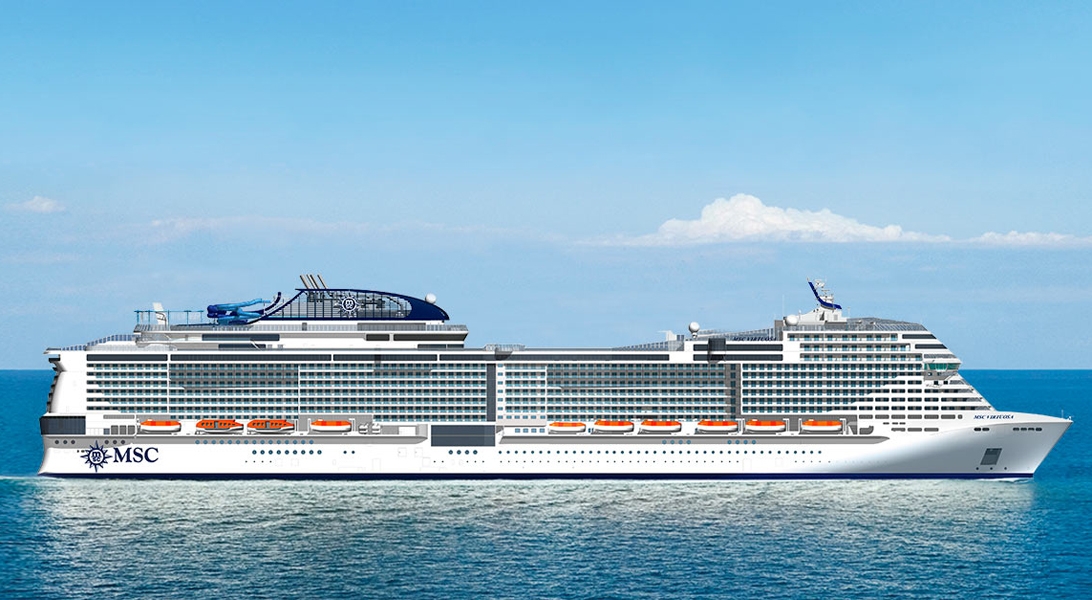
The images shown are for illustration purposes only and may not be an exact representation of what you find on the ship.
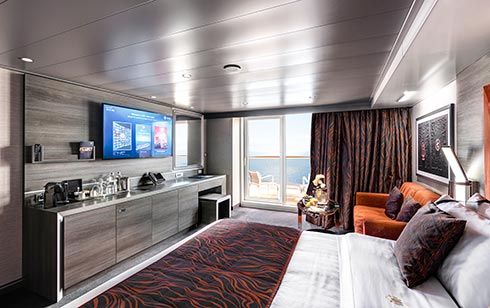
| Grade Code | From | To | |
| YC1 | Yacht Club Deluxe Suite | £3,246 | £3,246 |
Discover a world of privileges with MSC Yacht Club including:
The image is representative only; the size, layout and furniture may vary (within the same cabin category).
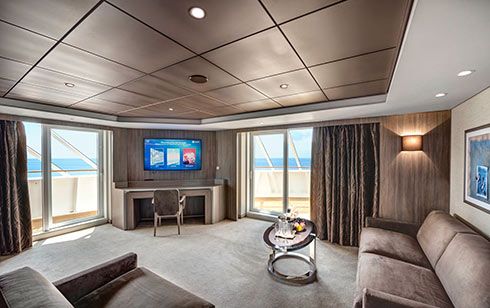
| Grade Code | From | To | |
| YC3 | Yacht Club Royal Suite | £5,238 | £5,238 |
Discover a world of privileges with MSC Yacht Club including:
The image is representative only; the size, layout and furniture may vary (within the same cabin category).
The images shown are for illustration purposes only and may not be an exact representation of what you find on the ship.
The images shown are for illustration purposes only and may not be an exact representation of what you find on the ship.
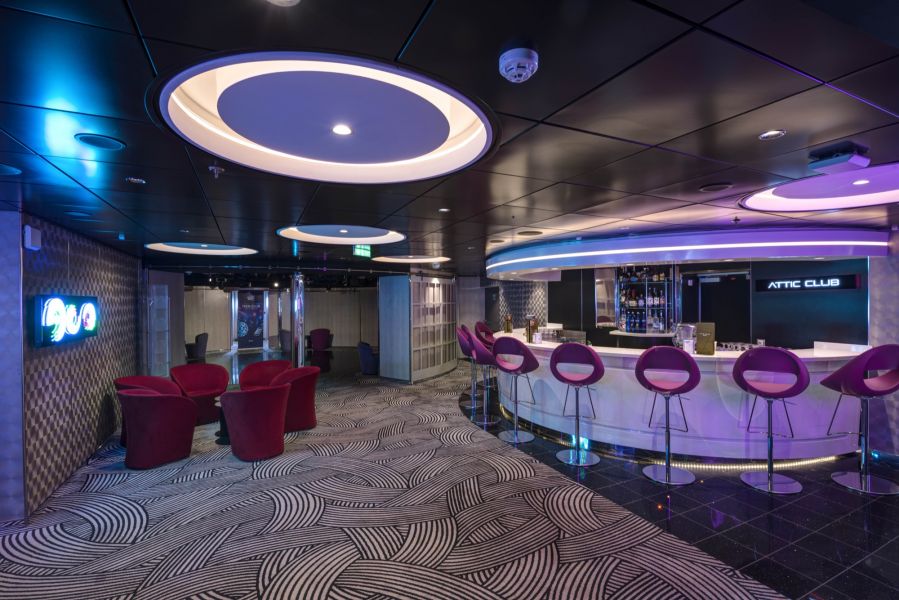
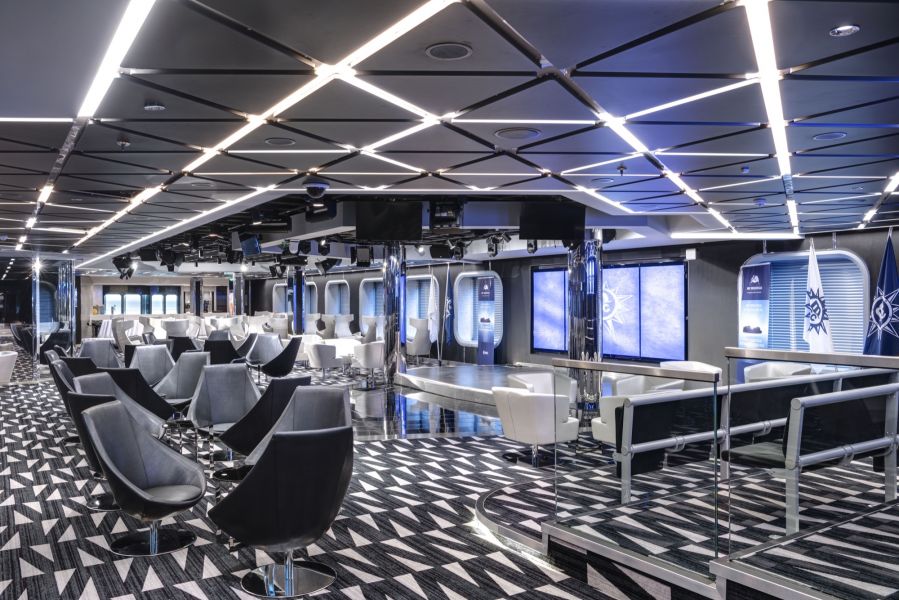
The images shown are for illustration purposes only and may not be an exact representation of what you find on the ship.
The images shown are for illustration purposes only and may not be an exact representation of what you find on the ship.
| 7 nights aboard the MSC Virtuosa | |||
| Drinks packages available. | |||
| Evening entertainment & Broadway style shows | |||
| Speciality Restaurants (charges may apply) | |||
| Upgrade to the Yacht Club Experience | |||
| Award winning MSC Aurea Spa (charges apply) | |||
| Gratuities Included | |||
| Port Taxes and Fees | |||
 | ABTA and ATOL Protection* | ||
Date 14th Feb 2026 |
Nts 7 |
Interior £858pp |
Oceanview £1,038pp |
Balcony £1,230pp |
Suite  |
Date 14th Feb 2026 |
Nts 7 |
Interior £858pp |
Oceanview £1,038pp |
Balcony £1,230pp |
Suite  |

| Interior staterooms from | £858pp | ||
| IB | Interior (Bella experience) | £858pp | |
| IS | Studio Interior |  | |
| IR1 | Deluxe Interior (low deck) |  | |
| IR2 | Deluxe Interior (medium deck) | £918pp | |
| Oceanview staterooms from | £1,038pp | ||
| OB | Ocean View (Bella experience) |  | |
| OO | Junior Ocean View with obstructed view | £1,038pp | |
| OM2 | Junior Ocean View (medium deck) |  | |
| OR1 | Deluxe Ocean View (low deck) | £1,122pp | |
| OL2 | Premium Ocean View (medium deck) |  | |
| Balcony staterooms from | £1,230pp | ||
| BB | Balcony (Bella experience) |  | |
| BS | Studio Balcony |  | |
| BR1 | Deluxe Balcony (low deck) | £1,302pp | |
| BR2 | Deluxe Balcony (medium deck) | £1,326pp | |
| BR3 | Deluxe Balcony (high deck) | £1,350pp | |
| BP | Deluxe Balcony with Partial View | £1,230pp | |
| BA | Balcony Aurea | £1,506pp | |
| Suite staterooms |  | ||
| SL1 | Premium Suite Aurea (low deck) |  | |
| SLJ | Premium Suite Aurea with Terrace and Whirlpool |  | |
| SXJ | Grand Suite Aurea with Terrace and Whirlpool |  | |
| YIN | Yacht Club Interior Suite |  | |
| YC1 | Yacht Club Deluxe Suite |  | |
| YJD | Yacht Club Duplex Suite with Jacuzzi |  | |
| YC3 | Yacht Club Royal Suite |  | |
| Interior | Oceanview | Balcony | Suite | |
| (All prices are £GBP per person) | ||||
| Sat 20th Dec 202520 Dec 25 | 1,099 | 1,229 | 1,399 | 2,608 |
| Sat 3rd Jan 202603 Jan 26 | 779 | 909 | 1,079 | 2,199 |
| Sat 17th Jan 202617 Jan 26 | 771 |
 |
1,122 | 1,878 |
| Sat 14th Mar 202614 Mar 26 | 779 | 983 | 1,067 | 2,063 |
| Sat 28th Mar 202628 Mar 26 | 839 | 909 | 1,079 | 1,689 |
Fusion Cruises when selling travel arrangements is a trading name of The Midcounties Co-operative Ltd. Fusion Cruises is an Accredited Body Member of Midcounties Co-operative Travel Consortium. (ABTA:P6652, ATOL:6053).
Book with Confidence. We are a Member of ABTA which means you have the benefit of ABTA’s assistance and Code of Conduct.
Some of the flights and flight-inclusive holidays on this website are financially protected by the ATOL scheme but ATOL protection does not apply to all holiday and travel services offered on this website. This website will provide you with information on the protection that applies in the case of each holiday and travel service offered before you make your booking. If you do not receive an ATOL Certificate then the booking will not be ATOL protected. If you do receive an ATOL Certificate but all parts of your trip are not listed on it, those parts will not be ATOL protected. Please see our booking conditions for information, or for more information about financial protection and the ATOL Certificate go to: www.caa.co.uk
